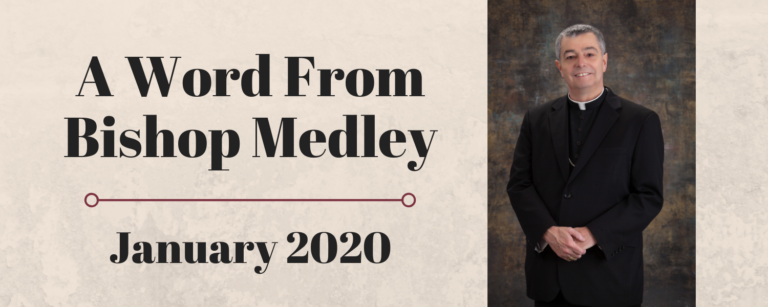Though the Diocese of Owensboro was established by a decree of Pope Pius XI in 1937, it was not until 1985 that a diocesan newspaper was created. The first edition of The Western Kentucky Catholic was published in January 1985. It was Bishop John J. McRaith, then just over two years the third Bishop of Owensboro, who founded the diocesan newspaper as a monthly publication. Assessing the needs of the local Church, he realized that communication was a vital obligation of the Church. In the 1980s, newspapers, television, and radio were the prime means of communicating.
Bishop McRaith chose as the editor of this venture Mel Howard, then a teacher at Trinity High School in Whitesville. Mel went on to serve as editor for 30 years until he retired in 2015. During that time he was often a staff of one: reporter, photographer, and editor.
Since the 1980s the modes by which people receive their news and entertainment have evolved greatly. The internet was born as part of the digital age. We know from studies that most people under the age of 50 never look at a newspaper or magazine. All of their media exposure comes from computers and cellphones. Many dioceses in the last decade have ceased publishing a newspaper. We explored this option and sought some advice from national studies. We came to realize that the people most likely to actively follow our diocese’s communications are still people who appreciate a print edition. In the meantime we have expanded our communications to include extensive online materials and The Western Kentucky Catholic is available online every month.
Mel Howard was succeeded at the newspaper by Elizabeth Barnstead and she makes up a communications team with Tina Kasey and Laura Rigsby. Among their monthly products is a brief video produced every month called Across the Diocese seeking to highlight events and initiatives.
Last month I made my ad limina visit to Rome. This is required of each bishop every five years when he goes with other bishops to meet with the pope and to pray at the tombs of the Apostles Peter and Paul. Among our many meetings during that week was one with the Dicastery for Communications. This is memorable because this department of the Holy See is not headed by a cardinal, or bishop, or even a priest. The prefect of this office and the staff are young, talented lay men and women with expertise in modern communications. But more than their expertise, they are people of faith taking rightful and appropriate places in service to the Gospel and the Church.
Men and women in communications today stand in a long line of tradition dating back to the Old Testament of writers who seek to communicate God’s revelation. These include King David, the great prophets, and unnamed writers who recorded the stories of God’s Chosen People. The tradition continues with St. Paul and the evangelists Matthew, Mark, Luke and John of the New Testament.
In our discussions with the Dicastery for Communications we asked for suggestions for counteracting the secular (and sometimes even religious) media who seem intent on tearing the Church down rather than building up the Body of Christ. They reminded us to preach the Gospel, to “tell the Good News.”
Thanks to all who have contributed to the 35-year success of The Western Kentucky Catholic. You have heralded the Good News and the proclamation of the Gospel has prospered.
Most Reverend William F. Medley
Diocese of Owensboro
Originally printed in the January 2020 issue of The Western Kentucky Catholic.
Copyright © 2020 Diocese of Owensboro/The Western Kentucky Catholic


